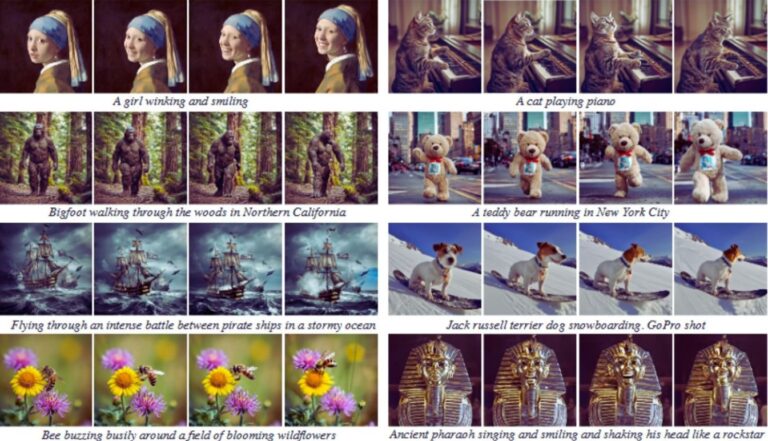We are in the midst of an explosion of generative artificial intelligence, with all the benefits and risks it entails. New launches follow one another, with some attracting more attention than others, such as those from Google.
Similar to what others have done, but probably with greater power, Google is about to launch a new AI called Lumiere. Its task is to easily create videos, but when will it come out? Let’s find out all the details.
Table of Contents
What is Lumiere, the AI to easily create videos
The inspiration for the name is clear. Google recalls the famous brothers Auguste and Louis Lumière, the two Frenchmen who invented the movie camera and the cinema projector, proposing the first film ever and opening up the history of cinema.
Lumiere will be able to generate videos starting from a text prompt (i.e. written instructions) from the user. This feature was already present on some competitors, for example among the new Canva functions, with mixed results.
Even on Lumiere, the generated videos will almost always present the same “fake” effect that we see in AI images. To avoid this, very precise prompts, high definition sources and above all post production would be needed. Elements that are not within everyone’s reach, so it will be normal to see videos that appear imprecise, undefined and with errors.
There will also be limits in generating videos on Lumiere: the videos will only last 5 seconds and will be square in proportion, with a resolution of 1024×1024 pixels, defined by Google itself as “low resolution”. Furthermore, they will only be able to maintain one shot at a time.
How Google Lumiere AI will work
We’ve highlighted some drawbacks, but there’s no doubt that Lumiere has the potential to revolutionize video generation. In fact, there will be different ways to do this, and some are very interesting.
The basic function is that you can write a simple command that describes the scene you would like to see. With “yellow flowers moving in the wind”, Lumiere will simply create 5 seconds of video with said flowers.
You can then turn a static image into a video. By giving Lumiere a photo of a boat in a lake, and writing that it should calmly navigate through the waters, it will start moving in the final video. This also works with just one specific element of the photo: for example, by identifying the water of the lake, only it will move, and not the boat.
You can change the style of an existing video. For example, in the short shot of a racing car, you can transform the car into a vehicle made of Lego, origami or flowers, simply by describing the desired style.
Elements of an existing video can be modified: a woman walking in the grass in a green dress can see it transformed into gold, striped, floral, long or short. Furthermore, it is possible to fill a video with missing parts, the AI will always take care of understanding what should have been at a certain point, or even beyond the frame.
You can generate stylized videos in the same style as an existing image. For example, if we give Lumiere a pencil drawing, and then enter the description command, it will generate our final video mimicking that pencil style.
When the new Google AI for videos comes out
Many fear the many dangers of artificial intelligence, from privacy to the creation of dangerous fakes.
On the topic of image generation, in particular, we discuss the economic rights of artists whose works are fed to AI to train them. This is what happened with the AI app “Lensa”, and there is no doubt that the controversy will continue with videos and video makers.
However, progress seems unstoppable and there is already a queue to try Google Lumiere. There is a lot of waiting, but at the moment it is not possible to use this new AI. Google has in fact only presented it to the public via an explanatory website, a video and a paper on the project.
All this happened on January 23, 2024 and for the moment there is nothing else. Consequently, naturally, there is still no release date, not even an indicative one.
This time, not even the classic assumptions were put forward by the leakers. The only thing we can imagine is that Google will try to pull this ace up its sleeve as soon as possible. In fact, we know that in the AI field, since ChatGPT was released, we have been trying to run very fast: we will find out in the future what will happen.












